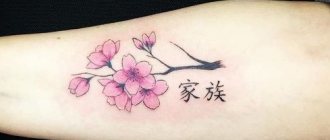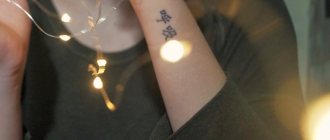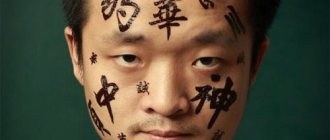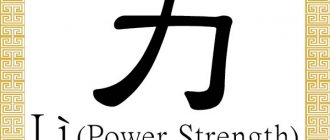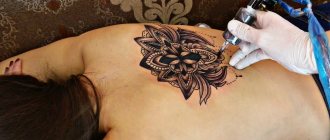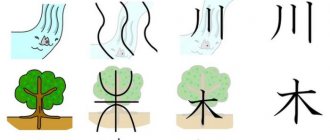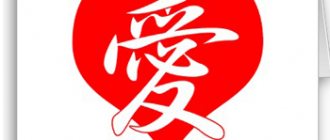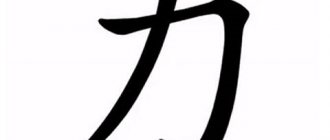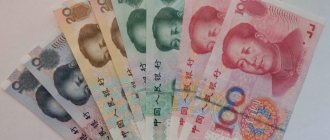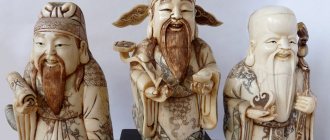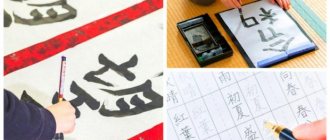Chinese characters are the most ancient type of writing on our planet, which not only has survived to this day, but also occupies one of the leading places among the most widespread languages in the world. The emergence and evolution of Chinese writing became the impetus for the development of the civilization of the ancient Chinese, and also had an active influence on the formation of the cultural values of China and even the whole world. A unique complex of graphic signs and drawings was created more than 6000 years ago.
When reading any Chinese text or book, the question arises what the hieroglyphs mean and how to translate them. Not even a single Chinese knows exactly how many characters there are in the Chinese language.
Traditional Chinese writing
Hanzi is a traditional Chinese script officially used in Hong Kong, Taiwan, Macau, and even outside the country. There are about 47 thousand hieroglyphs in this language, but not all are used. To write correctly, you need to know about four thousand characters.
Many Chinese words are made up of several characters, with one character representing one syllable. In addition to traditional Chinese writing, there is also a simplified one, which was invented to improve literacy in the country. In simplified writing, characters have fewer strokes than in traditional writing; such writing is used in China, Singapore and Malaysia.
Chinese characters are considered the most ancient compared to others; they are used in Chinese, as well as in Korean and Japanese. Until 1945, this script was used even in Vietnam.
No one knows how many hieroglyphs exist (it is assumed that about 50 thousand), since their number and type are constantly changing.
Around the world, about a thousand different hieroglyphs are used every day. This amount is enough for approximately 93% of printed material.
Hanzi
History of origin
Scientists and historians still offer different versions of the origin of hieroglyphs. Most are inclined to believe that the first symbols appeared in the Yin era. Chinese writing is unique and the people of China are proud to say that the hieroglyphs reflect the unity of heaven and man.
Writing developed during the gradual civilization of society. The hieroglyph was the basis of such a variety of Chinese art as calligraphy. Each creator wrote a hieroglyph according to specific requirements, but the thickness of the lines and curls were unique. Hieroglyphs in China have always been valued as works of art, and wealthy families collected entire collections of such pictures. The symbols were placed in frames, placed on tables, and hung on walls. The teachings of Feng Shui reveal in detail what the pictures mean. More often they are made in black.
Most words consist of several hieroglyphs. And, in addition to classical writing, there is also a simplified version in which the characters have much fewer elements.
Writing hieroglyphs
The Chinese consider it normal to know two thousand characters. The spelling of a hieroglyph depends on its designation, for example, 一 is read as and, its meaning is one. The hieroglyph containing the most lines is made up of three characters - 龍, translated as “dragon” and pronounced “lun”.
Chinese writing retains its form throughout the country and is independent of dialect. If you need to communicate something and you write a message on paper, then a Chinese person from any province will understand you.
Keys in Chinese characters are called graphic components. Separately, they represent simple signs and help to classify the hieroglyph as a separate topic. For example, the key 人 can have different meanings in different characters:
- By itself it is translated as “man”;
- In the hieroglyph, 亾 means death;
- In the sign 亿 it takes on the meaning “many”, “one hundred million”;
- In the hieroglyph 仂 it is translated as “remnant”;
- The character 仔 with this sign means “child”.
Tattoos can also be complex, telling a story. This way the client can imprint on his body a small story that has great meaning for him. Most often the inscriptions are in Chinese and Japanese, but there are also Korean and Vietnamese characters.
Many people get tattoos as a talisman, considering them part of the ancient culture of China and Japan. Such tattoos do not pose any difficulty for artists, since they are small in size (usually no larger than the palm of the hand).
Often people choose simple hieroglyphs that mean one word. Artists also make tattoos denoting a phrase. You can pin both a proverb and your own phrase.
Chinese characters
Most tattoos are filled with black ink, sometimes red or white are used. It happens that hieroglyphs serve as an addition to a large tattoo - for example, a dragon.
What are hieroglyphs and why are they used in the East and not in the West?
— What attracts you, a specialist in historical linguistics, specifically in the Chinese language?
— First of all, the historical aspect. In its features, the Chinese language is extremely different from typical European languages, but at the same time it is also terribly lucky compared to its neighbors in Southeast Asia. It has a three-thousand-year written history, recorded in such a gigantic array of texts that there will be enough complex, contradictory, unresolved issues for another hundred years to come, if not more. Consider, for example, the question of how to restore the sound of ancient Chinese texts, which in hieroglyphs was never directly reflected in writing!
— How did you start studying hieroglyphs?
— In addition to purely theoretical reasons, there were also personal ones: I owe a lot to at least three wonderful people, two of whom, unfortunately, are no longer alive, that I teach classical Chinese today and practice it professionally. This is my father and teacher Sergei Anatolyevich Starostin, who himself was engaged in Chinese reconstruction and etymology; my Chinese teacher Grigory Aleksandrovich Tkachenko is a man with a completely unique scientific vision, the author of numerous studies and translations in the field of Chinese culture and philosophy. Both of them taught by personal example the most important thing - how to overcome the abstract fear of such a gigantic monster as Chinese civilization, and calmly approach its study from a modern, logical, methodologically correct position. And finally, of course, the director of the Institute of Oriental Cultures and Antiquity, where I work, had and continues to have a great influence on me, Ilya Sergeevich Smirnov - an excellent expert on Chinese culture and poetry, who knows how to speak in lectures, in books, and in personal conversations. bring this culture to life like no other.
— What place does the subject of your scientific interest occupy in the modern world?
— Hundreds of millions of Chinese and Japanese today use hieroglyphic writing in their daily lives - what’s more, the very word “hieroglyph” (wen) in the Chinese language long ago acquired such secondary meanings as “written text”, “literature”, “culture” ", "civilization", that is, the main thing that distinguishes a cultured, civilized person from a barbarian.
But at the same time, the deeper you dig, the more you solve old questions, the more new ones arise. Almost every few years, Chinese archaeologists excavating ancient burials discover more and more written monuments, so today we know much more about hieroglyphics than the most famous medieval Chinese sages knew.
— If you needed to quickly interest a stranger in Chinese characters, how would you do it?
— In my opinion, no outside action is required here: the Far Eastern written culture, even in the form of a sign on a Japanese restaurant, even in the form of a manga comic (by the way, in terms of popularizing hieroglyphic culture, Japan, of course, is far ahead of China), is visible today everyone from a very early age. And the task of a professional is to prevent a person from becoming confused, confused, or afraid of the excessive complexity of hieroglyphic culture. It is important to show very quickly that this culture actually obeys certain, completely natural and logical laws; that in order to master it, you do not need to memorize fifty thousand independent pictures-hieroglyphs, but you only need to understand the simple principles by which the complex in this culture is built from the simple.
— Can you tell us about the strangest thing you encountered while reading sources?
“Many stories are connected with individual private absurdities that have been passed down from teacher to student for centuries only because someone mistakenly put one hieroglyph in the text instead of another. The Chinese, by the way, understood this themselves for a very long time. In another text written before our era, there is an anecdote about how someone agonized over a manuscript for a long time, trying to understand the sentence “A general with three pigs crossed the river,” until he was told what actually happened in this place “The commander crossed the river on the day of the Ji-hai calendar” is illegibly written. The authority of the elder in traditional (and also in modern) China is an almost impenetrable thing. Alas, it is human nature to make mistakes, and for a researcher of Far Eastern culture the most important thing today is to learn to combine respect for tradition with a competent critical attitude.
— If you had the opportunity to study a completely different topic now, what would you choose?
- It’s difficult for me to answer this question, because in my main line of work I’m already working on a completely different topic - comparative historical linguistics, or more precisely - the construction of a general genealogical classification of the world’s languages. Studying the history of the languages of Eurasia, Africa, and America allows me to understand the history of the Chinese language much better, to evaluate how natural or, conversely, unusual are the changes that took place in its phonetics, grammar, and vocabulary. In a sense, we can probably say that a “completely different” topic from the field of cultural history - one that would not be connected with Chinese writing at least indirectly - is generally difficult to imagine!
Examples of hieroglyphs with translation
Tattoo parlors offer each client a standard set of hieroglyphs. Most often, these symbols are used as talisman tattoos.
Happiness
Hieroglyph happiness
According to the Chinese, happiness depends on the protection of Heaven and the Gods. The tattoo is aimed at good luck, happiness and luck in any area.
Great happiness
Hieroglyph Great happiness
This tattoo is considered a very powerful talisman. Many believe that she grants wishes. It is best to use it to attract happiness in a relationship with your significant other.
Love
Hieroglyph Love
Helps attract happy love. Helps to make love mutual, attract a life partner and gives happiness and tranquility.
Eternal love
Hieroglyph Eternal Love
Also used as a talisman, it represents “love to the grave”, mutual understanding, support, sincere and happy love. Keeps fiery love forever and supports the feelings of two people.
Luck
Hieroglyph Luck
Great idea for a talisman tattoo. Preserves luck and increases it, gives luck.
Wealth
Hieroglyph Wealth
Helps create the right atmosphere to attract wealth and prosperity in the right area. Provides both material and spiritual wealth. Brings both money and good luck. It is a good amulet.
Money
Hieroglyph Money
The most common tattoo option. Helps in attracting wealth and money. If this sign is placed indoors, it also attracts wealth. It looks like a hieroglyph for wealth, but it attracts only money, prosperity and good luck in such matters.
Prosperity
Hieroglyph Prosperity
Helps in matters of career advancement, regulates failures in life. Used to attract good luck in the desired field of activity. It is considered not only a talisman, but also a talisman.
Abundance
Hieroglyph Abundance
Brings wealth to the home of the tattoo bearer, both monetary and moral. Similar to the hieroglyph of prosperity, it attracts good luck to the desired field of activity.
Hieroglyph Longevity
Improves health and increases life expectancy. It is considered a talisman and protects against death at a young age.
Force
Hieroglyph Strength
Increases physical and spiritual strength, strengthens the moral foundation, helps the owner cope with problems more effectively and quickly. Suitable for exemplary family men.
Joy
Hieroglyph Joy
Used to achieve inner harmony, attract and maintain a good mood.
Health
Hieroglyph Health
Helps in solving health problems, restores physical and mental strength. Extends life and its quality.
World
Hieroglyph World
It means great responsibility and power. Can be used for tattooing due to some personal beliefs.
beauty
Hieroglyph Beauty
It is considered a talisman for attracting beauty and maintains external and internal attractiveness.
Hieroglyph Bravery
Makes the owner of the tattoo more courageous and courageous, helps to cope with difficulties.
Independence
Hieroglyph Independence
Represents freedom of action and the desire to do things your own way. Helps get rid of bad habits or activities.
Courage
Hieroglyph Courage
Characterizes the owner of the tattoo as a strong and strong-willed person and helps to maintain this quality.
Dream
Hieroglyph Dream
Represents sublimity, inspiration, promotes the fulfillment of desires.
Fulfillment of desires
Hieroglyph Fulfillment of wishes
Like the previous hieroglyph, it helps in the fulfillment of cherished desires and is a more powerful amulet in comparison.
Ancient finds
Carrying out regular archaeological excavations at the ruins of Banpo, scientists found more than five thousand different inscriptions, drawings and signs that were meaningless at that time. These graphic symbols had a certain pattern; scientists also noted the fact that many inscriptions had basic features similar to Chinese characters. Having carried out extensive work comparing and contrasting the finds with modern Chinese writing, archaeologists came to the conclusion that they had obtained evidence of the existence of hieroglyphs at that time, or rather proto-hieroglyphs.
Proverbs in Chinese
Often, fans of Chinese or Japanese culture who trust the horoscope have their zodiac sign stamped on their skin in the Chinese or Japanese horoscope. The most common place for a tattoo is the neck (sometimes the stomach or back). You can also get a tattoo on your arm, shoulder, behind the ear or on your ankle.
The Chinese and Japanese prefer hieroglyphs with English translations as tattoos, which often have a lot of errors. Europeans often make do with tattoos with primitive meanings.
You can also choose a tattoo that means some proverb or word that has a special meaning for you. This tattoo will become your personal talisman. The photo below shows hieroglyphs representing simple objects:
Chinese characters
If you want a tattoo with several hieroglyphs at once, choose a proverb or the desired phrase. It can express your life credo, character and life goals. Moreover, Chinese proverbs are very instructive and interesting. You can choose any proverb from the photo below:
Chinese proverbs
Many celebrities get tattoos in the form of hieroglyphs, believing in their magical powers or investing them with a special meaning. For example, Janet Jackon has several tattoos of hieroglyphs on her neck.
Britney Spears inked a hieroglyph that means “strange.” The singer claims that she wanted to get a tattoo with the translation “mystical”, but did not get the desired result.
Another singer, Melanie C , also has a tattoo on her shoulder that means "Girl Power". This phrase was the motto of the Spise girls music group. Singer Pink got a tattoo that translates to “happiness.”
Keys in hieroglyphs
Some hieroglyphs seem intuitive. Many images are similar to the objects and things that they depict. This is explained by the fact that hieroglyphs originated from pictograms, which depict their meaning as accurately as possible with a picture.
For example, the character 日 means sun and is used in all East Asian languages. Initially, its image was round, but over time it changed a little. Round hieroglyphs were no longer used in writing due to their inconvenience.
In addition, a common hieroglyph in different scripts brought peoples closer together. This symbol is considered a key, it is used in such hieroglyphs as:
- The character with a line below 旦 means dawn;
- The character with a left slash 旧 means "ancient".
Another key, 厂, which resembles the letter "g", also has different meanings in different words:
- The curl character 厄 translates to "difficulty";
- The multi-stick character 历 means “calendar, history”;
- The character with a cross 厈 means "cliff".
This is interesting: Beautiful tattoos of inscriptions with translation on the arm, leg, wrist for girls and men + 150 PHOTOS
Simple Chinese Characters: 12 Easiest Chinese Characters
Chinese is one of the most difficult languages, but if you choose the right technique and understand the basics of hieroglyphs, then there is nothing difficult about it. In addition, Chinese philologists assure that memorizing each next hieroglyph will be much easier than the previous one.
The Chinese claim that the logic of hieroglyphs is not complicated and remembering the simplest of them will not be difficult.
- 人 ren – person. First you need to draw a line to the left, then to the right (you need to start writing it from the middle of the previous line). Another rule that is mandatory to remember is that all hieroglyphs are written clearly from top to bottom.
Human
- 木 mù – tree.
Tree
- 日 rì – has two meanings – day and sun. Previously, this hieroglyph was written differently - there was a dot in the center of the circle. Now it is not as obvious as before. If you look closely at the sign, you can see the disk of the sun with a halo around it. According to the rules, first the left vertical is drawn, then the upper and lower horizontal, and only after that the right vertical. All lines in this case are written from left to right.
Sun, day
- 月 yuè – the hieroglyph has two meanings: moon and evening. It is a pictogram that depicts the crescent of a young moon.
Moon
- 山 shān – means a mountain, the sign is a little similar to it. It is deciphered as follows: there are three mountain peaks on the horizon. Initially, the left short vertical line is written, which smoothly turns into the lower horizontal one. Using smooth movements, write a long middle line and a shorter outer line. All lines should be drawn exclusively from top to bottom.
Mountain
- 口 kǒu. The sign has a dozen symbols, but the most common are “entrance” and “mouth”. It is written in the same way as the hieroglyph “sun” only without the middle line.
Mouth, Entrance
- 犬 quǎn – dog.
Dog
- 火 hǔo – means fire. It looks like a fire and its flames that shoot up. You need to draw in the following sequence: left and right “flames”, and then add the “man” sign.
Fire
- 女nǚ – woman. The Chinese see almost all parts of a lady’s body in this sign - arms, legs, head and back. If you look closely, the sign is depicted using 3 lines.
Woman
- 门 men – door. If you look at the traditional door sign, it looks like the front doors in regular old Chinese houses (something like the saloons in cowboy movies).
Door
- 王 wáng; wàng – emperor, king, king, prince.
King
- 水 shuǐ – water.
Water
Where to get a tattoo
Tattoo in the form of hieroglyphs
Many people who get tattoos of hieroglyphs believe in their miraculous power. If you believe that a tattoo can protect you from evil spirits or troubles, get it in a visible place. A tattoo on an open part of the body wards off misfortunes and problems.
Often the neck is chosen as a place for a tattoo, but it is not necessary to get it there. An excellent place would also be the arm or collarbone area.
You can also get a tattoo on a closed area of the body - the back, side, lower abdomen, leg or ankle. Combinations of inscriptions with drawings of Chinese women, dragons, etc. look very nice.
Tattoos can be made in 2D and 3D format. The latter look quite impressive, especially on the back or stomach.
Such tattoos are more popular among Europeans than among the Chinese or Japanese.
Tattoos in the form of hieroglyphs have always been popular and are unlikely to ever go out of fashion. Fans of Eastern culture often see a mystical meaning in tattoos.
Before going to the salon, you need to carefully consider your future tattoo, so as not to get something absurd on your body. There are cases when a person trusts the master, expressing his preferences and not understanding hieroglyphs at all. The master types in a completely different phrase or word that the client asks for, often insulting or humiliating.
Chinese tattoo hieroglyphs about natural phenomena: meanings, ideas, photos
Morning evening. Chinese tattoo hieroglyphs have always attracted romantic people. They are especially interested in this combination. The morning hieroglyph consists of an icon, in fact, of the sun itself, as well as a symbol of a burst seed skin. In the evening everything is just as logical – there are icons of the sun and running away.
IMPORTANT: For dreamers who love to watch sunrises and sunsets, such a tattoo will be very appropriate.
Hieroglyph for a tattoo meaning morning
Hieroglyph for a tattoo meaning
Spring evening. The tattoo is ideal for those people who want to highlight the renewal in their lives. Or just those who adore this time of year. The Chinese, by the way, are very fond of this hieroglyph. It consists of the grapheme of a newly hatched plant, grass and sun.
Chinese character for tattoo meaning spring
Autumn. It is also a romantic time, as well as a fruitful one. The hieroglyph consists of the grapheme “cereals”. There is also a “fire” symbol, since the stems remaining after harvesting were burned. In addition, the grapheme “fire” is similar to “cricket”. These melodious insects are also associated with the autumn season, as this is when they love to sing.
Hieroglyph for a tattoo meaning autumn
Clear sky. The Chinese were very fond of this phenomenon, comparing smart people with it, for example. The highest degree of recognition sounded like “son of heaven” - that’s what the emperor was called. The hieroglyph looks like a man with his arms outstretched, above which is the sky.
Hieroglyph for a tattoo that means clear sky
What not to do
You should not choose a master who specializes in several types at once, and not just tattoos in the form of hieroglyphs. It is better to choose a tattoo artist who works in one direction, as he knows much more about hieroglyphs.
There is no need to get tattoos “for fun” without putting any special meaning into them. Eastern states do not accept frivolous behavior. In addition, hieroglyphs can be very similar, and in a hurry it is easy to confuse them. When you notice the mistake, it will be too late, since tattoo removal is a complex, long and unpleasant process.
You should also not get a tattoo if you cannot tolerate pain. Tattoos on the neck take a very long time to heal, much longer than on other places. In order not to harm yourself, you need to follow all the recommendations of the tattoo artist and maintain hygiene.
It is not recommended to get tattoos for people with diabetes, skin diseases, or blood clotting disorders. Also, you should not drink alcohol before the procedure, as it thins the blood, which can cause bleeding.
English alphabet letter symbols for nickname
- A Ẵ ά å ǟ @ à ẵ ắ ǡ α à ǻ ẳ ǻ ằ á å á â ⱥ â ᗩ ꭿ ằ ắ ∀ ä ₳ ã ä ã ª
- B ฿ ᗷ ᛔ ß ƀ ђ ᗹ ␢ β ᗿ ᗸ ᏸ ᏸ ᗾ ხ ℬ ɓ ᗽ
- C ℭ č ć ḉ ₡ ς ¢ ċ ☾ ḉ ℂ ć ĉ ⴚ ⊂ č ꮸ ¢ ç ċ ĉ ç
- D Đ ȡ ∂ ɗ ð ᗫ ᚦ ď ₫ đ ᚧ ď
- E ६ ໂ ę ê é ê ế ∑ ể ε ℯ ė έ ę ℮ έ ề ℰ ễ è ě ē عє ē ҿ ξ ě é è € ҿ ė є £
- Fℱᚨḟƒφᚩჶḟᶂ₣ᚪᚫ∮
- G ᶃ ǥ ₲ ĝ ꮹ ġ ġ ğ ǥ פ ģ ğ ℊ ĝ ģ ꮆ
- H Ĥ ꮵ 廾 ħ ḩ ℍ ħ ℎ ℋ ℌ ḩ ਮ ℏ ዙ һ ή ♄ ћ ђ
- I am
- JᲟĵĵɉℑᶖ
- KK ꮶ ҡ ķ ҝ ќ ᶄ ķ ќ ₭ ҝ ҡ
- L Ḽ ŀ ľ ꮭ ľ ℓ λ ŀ ļ ȴ ĺ ḽ ₤ ĺ ļ ł ℒ ł
- Mᗰℳᛖḿ₥ጠḿᙢᶆ爪ʍ
- N Ή ŋ ȵ ń ӈ ₦ ň ℵ ӈ ņ η ň ກ ŋ ń ℕ ņ ห ñ ⋒ ʼn ח ñ
- O σ ợ ő õ ό ø ó ò ò ợ θ ó ọ ổ ờ ờ ớ ø ό ớ ọ ō ტ ô ô ǿ ō ö ở ǿ õ ợ ö
- P Ҏ ℘ ꭾ ק ꮅ ₽ ҏ ᶈ ᖘ 尸 ₱ ☧ ҏ ρ թ ƿ ҏ ℙ
- Q Ǭ ℚ ૧ ǭ ჹ q ᶐ q
- R ᶉ ŗ ŗ ŕ 尺 ŕ ř ℟ ℜ ᚱ ꮢ ℛ ჩ ᖇ ℝ ř
- S Ȿ š ṧ ֆ ŝ տ ś ṧ $ ś ŝ ꮥ š § క ş ∫ ş ₰
- T ⍡ 干 ť ť tt ŧ ṫ ţ テ ţ ṫ ŧ † ꮏ τ ₮ ₸ ꮖ ナ
- U Ű ᙀ ữ ů ũ ŭ û ü ∪ ủ ử ΰ ữ น û ừ ũ ų ů ύ ú ự ű ử ũ ŭ Ź ų ü ū ա ū ự ϋ ừ ú
- V Ꮙ ✔ ∨ ✓ √ ṽ ᶌ \/ ṽ ℣
- W Ꮚ พ ẁ ẅ ₩ ώ ผ ŵ ẁ ẅ ꮤ ω ŵ ꮃ ᗯ ฬ ಎ ಭ ฝ ꮗ ฟ ẃ ѡ ẃ ᙡ
- X Ẍ ᶍ ẍ ✘ × ✗ א χ ჯ ᙭
- Y Ⴘ ẏ ẏ ע௶ ɤ ꮍ ɣ ꭹ ¥ ϒ
- ZẐꮓℤẑɀ乙
How to make a tattoo
Tattoo process
Before getting a tattoo, you need to provide the artist with a sketch and determine the area of skin on which the tattoo will be located. If you don’t have a sketch, you can ask the master himself to draw it, since most of them are excellent artists. When the sketch is ready and the location of the future tattoo is chosen, preparation for the tattoo begins.
If necessary, hair is removed from the skin and an anesthetic gel or spray is applied. The skin is treated with an antiseptic, and needles and paint caps are never reused. The master must work in sterile gloves. Then the design is transferred to the skin using special paper or a gel pen (for simple tattoos).
Afterwards, paint is driven into the skin using a special machine. A small needle very quickly pierces the skin and leaves a small amount of composition inside.
The pain when getting a tattoo is not severe, so many people refuse anesthesia. During the procedure, some blood may appear, which is normal.
Symbols of letters of the Russian alphabet for nickname
- A ã ᗩ ã ắ ª å ǡ ǻ ằ â ẫ ά @ ǻ ꭿ â α ₳ à á ằ ẵ ẳ ⱥ ẵ ä å ä à ǟ ắ á
- B Ϭ ϭ চ ҕ ɓ ƃ ҕ ঢ়
- In ᗸ ᗽ ᏸ ᗾ β ᏸ ᗹ ᗿ ฿ ℬ ᛔ ɓ ᗷ ß
- G ℾ ┍ ୮
- D ℊ ∂
- E è ē є ६ ē ė ℰ ê ҿ ě ê ε ໂ έ ℯ è ė é ℮ € ę ề ế έ ễ ě ể عє ę ҿ é
- F ♅ ӂ ӂ ӝ ᛤ җ җ
- Z Յ ℨჳ
- And Ū ӥ ҋ ũ ŭ ũ ҋ ù ӥ ù ū úน ú ŭ ự
- To ᶄ k ҡ ҡ ќ ᛕ ќ ₭ ҝ ꮶ ķ ҝ ķ
- L Ꮧ ሎ ሌ ሊ ሉ ል ለ ꮑ
- М爪ℳᙢḿᗰᶆᛖ₥ʍḿጠ
- N ℏ ή ℍ ዙ ℌ ዘ ℋ ħ ӈ ḩ ℎ ዞ ዚ ዜ ਮ ዟ ዛ ዙ ӈ ꮵ ĥ ዝ
- About Ō ό ớ ტ õ ở ợ ǿ ọ ổ ǿ θ ó ợ ờ ờ ợ ό ø ớ ö ô σ ô ò ő ø ọ ō ò ö õ ó
- P ກ ҧ ո ग ⋒ ҧ
- R Ƿ ᖘ ꮅ ꭾ ₱ 尸 ℙ ρ ҏ ҏ ק ☧ թ ℘ ҏ ᶈ ₽
- With Ḉ ꮸ ℭ ċ ℂ č ḉ ç ¢ ć ĉ ς ć ⊂ ċ ⴚ č ☾ ç ĉ ₡ ¢
- T ⍑ ṫ ţ ŧ ť t ⍡ ₮ τ t
- У Ẏ ꮍ ¥ ɣ ẏ ௶ ע ꭹ ⴘ ϒ ɤ
- F Ⴔ ቂ ቇ ቈ ቆ ᛄ փ ቃ ቁ ቅ ቄ փ
- X ✗ ჯ ẍ א ✘ ẍ ᶍ χ × ᙭
- Ts Ա ų
- Ch ੫ ӵ ҹ ӵ ҹ ⴁ կ կ
- Ш ω ᙡ ש ᗯ
- Shch պખ
- Ъ Ѣ ৮ ѣ
- ы Ӹ ӹ
- b Ѣ ৮ ѣ
- E ∌ ӭ ℈ ∍ ヨ ӭ ∋
- Yu ਠ
Preparation and care
Remember that a tattoo is for life, so think carefully before getting a specific design. If you attach a certain meaning to a tattoo, then remember that beliefs change over time.
To apply a tattoo, it is better to choose the period from late autumn to early spring (when you need to wear closed clothes). It is better not to get a tattoo on tanned skin and not to sunbathe for a while.
During healing, it is extremely undesirable for the drawing to be exposed to sunlight. On the eve of getting a tattoo, you should not drink alcohol or take medications that affect blood pressure.
The first two weeks are considered the healing time of the tattoo. During this period you cannot:
- Go to the bathhouse, solarium;
- Often be in the sun;
- Do peelings, use hard washcloths.
At the tattoo site, clothing should not rub the skin. If irritation does occur, you need to contact a specialist. If you do not take any action, you can get an infection or develop a skin disease.
Interesting facts about the Chinese language
Chinese is one of the most difficult languages
It is estimated that Chinese is spoken by about 1.5 billion people, most of whom live in China, Singapore and Taiwan. There are also many Chinese speakers in North America, Australia, Asia and Western Europe, but almost none in South America, Eastern Europe and Africa.
This language is considered one of the most ancient. Scientists have found examples of Chinese writing that date back to the fourteenth century AD. Fortune-telling inscriptions made on animal bones were discovered.
Chinese has many dialects divided into 12 groups. The dialects of two different provinces can be so different that their inhabitants simply cannot understand each other. Most differences in dialects are due to the sound of words; there are not many differences in spelling.
Putonghua is a standard Chinese language that is used in communication between people with different dialects and is based on the Beijing dialect.
This is the official language of the People's Republic of China and is used in the media. Residents of Taiwan use the language "Guoyu", Singapore - "Huayu". These languages hardly differ in their sound.
Evolution of Chinese hieroglyphic writing
| [Perhaps the Chinese language of the Yin inscriptions is not only Nostratic, but also Indo-European in origin, because hieroglyphs in 2000 BC appeared together with chariots and ceramics similar to the steppe, and some of the ancient Chinese roots are consonant with Proto-Indo-European ones (for example, Ancient Chinese met - Proto-English medhu “honey”). Apparently in 2000 BC. one of the great migrations of the Indo-Europeans began: the Hittites-Nesites with the Luwians and Palais swept away the state of Hatti and settled in Asia Minor, using their own hieroglyphic writing. At this time or a little later, the Indo-Aryan-Hurrian state of Mitanni appeared, and in the 18th century. BC. the penetration of Indo-Aryans into Hindustan began...].
|
| (c) Lawrence Lo (Ancient Scripts) |
Picture writing Gu-wen (XV-XII centuries BC)
The writing of the most ancient inscriptions on oracle bones and bronze vessels [the first monument is the text on a tortoise shell from the era of the Yin Kingdom]. Allows variation of signs.
The study of ancient writing - inscriptions on oracle bones and turtle shells of the Shang-Yin era allows historians to judge the nature of Chinese society in the 2nd millennium BC.
- Serkina A.A. Experience in deciphering the oldest Chinese script
. The author reviews many works devoted to the oldest monuments of Chinese writing, and also offers a number of his own decipherments of fortune-telling inscriptions. in the Appendix: Tables of pictograms, Tables of cyclic signs, Drawings. [You can download the PDF from Twinpix.]
Letter Zhou-wen / Da-zhuan ("great seal", 800-200 BC)
Normalized.
Xiaozhuan script ("small seal", from 200 BC)
"Official Letter" to Li-shu
Appeared after the invention of the brush.
"Charter Letter" of Kai-shu (from 400 AD)
It remains to this day without undergoing significant changes.
- Radical Index - key Chinese characters and their groups [!]
- Chinese Characters Dictionary Web
